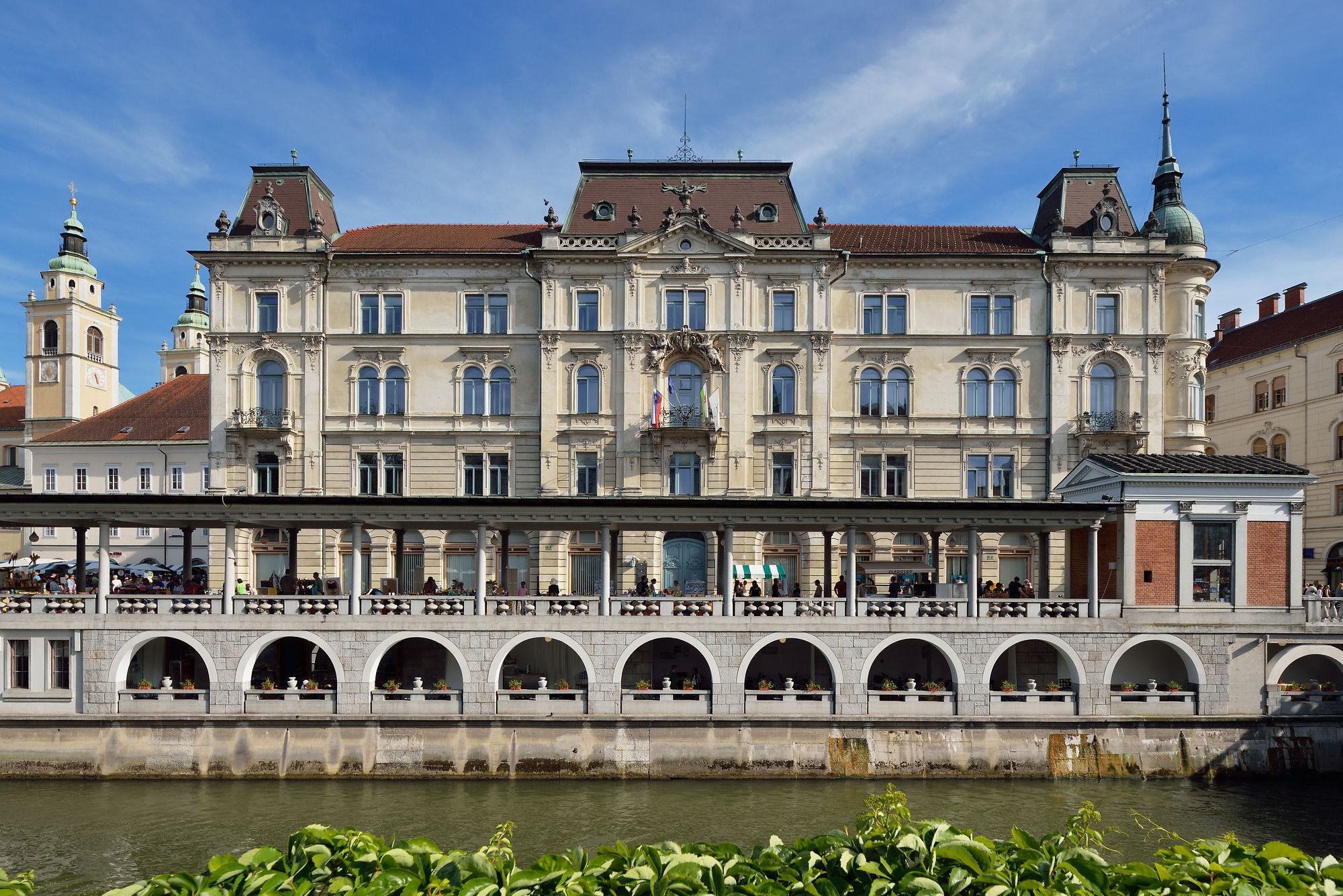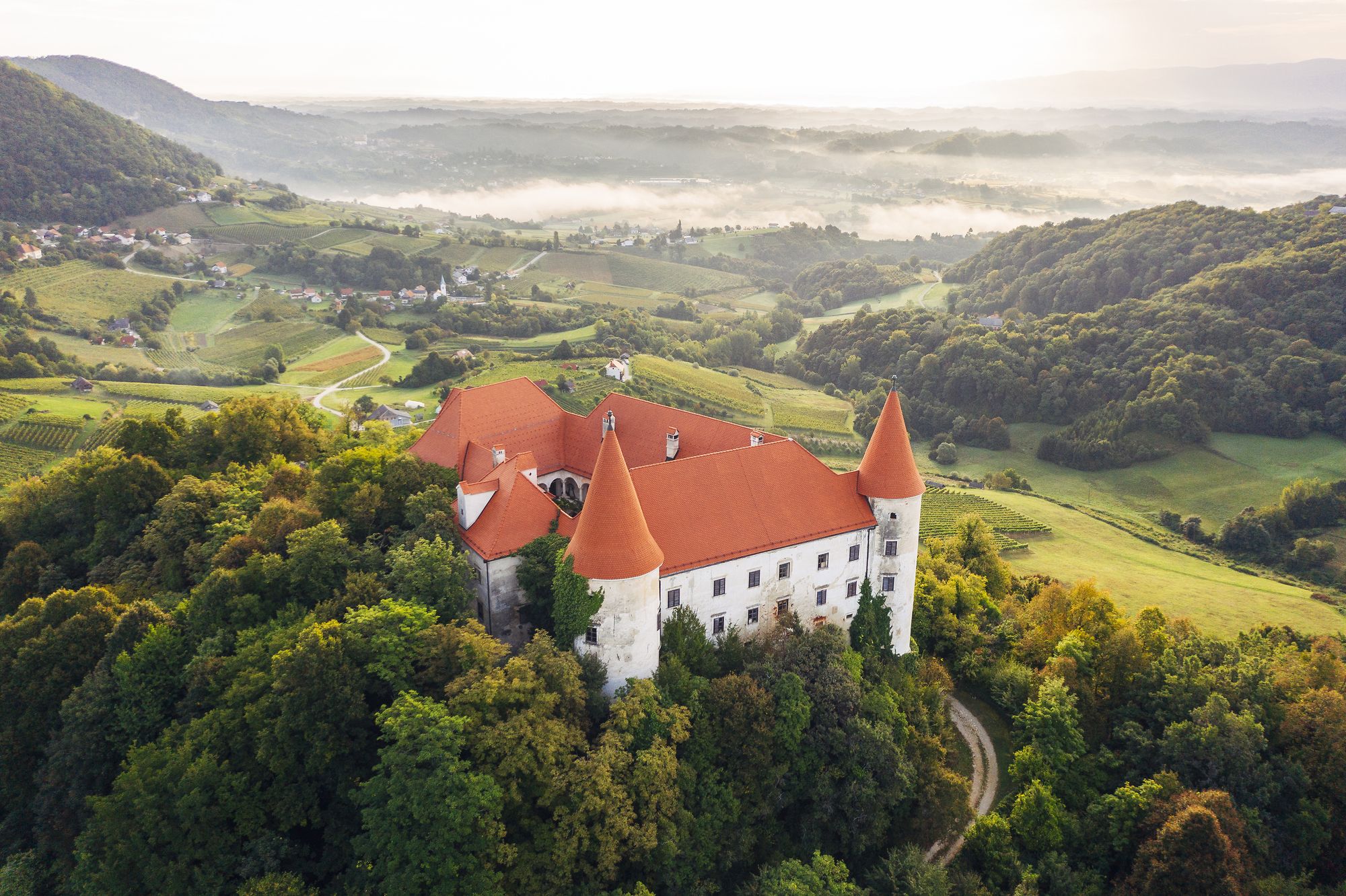Cultural heritage
Slovenia takes pride in architectural masterpieces, from Roman villas to modern buildings. Medieval town centres, imposing castles, churches and monasteries, and modern buildings are just some of the rich architectural heritage.
Architectural landmarks
Jože Plečnik is a world-renowned Slovenian architect whose vision transformed the image of Ljubljana and the Prague Castle. His works, such as the Triple Bridge, the National and University Library and Plečnik's Žale, combine elements of classical architecture with modern approaches, which is unique in the world. Plečnik's architecture reflects his passion for urban planning, and his ideas have had a profound influence on the modern architectural language. His legacy is included on the UNESCO’s World Heritage List, a testament to his global significance.

The monumental legacy of Jože Plečnik
Slovenia is full of castles, from medieval fortresses to Renaissance mansions, which tell stories of the past and offer unique experiences, including the possibility to stay overnight.
Castles

More on cultural heritage
Tourism
Bled is one of the most popular tourist destinations in Slovenia. Among the main attractions is the picturesque Lake Bled, where visitors can relax by the lake or take a traditional boat (pletna) ride to the Bled Island, where the Church of the Mother of God on the Lake stands. The Bled Castle, towering over the lake, offers spectacular views, while the famous Bled cream cake is a culinary speciality worth trying.
Bled
Bohinj is a picturesque destination in the Julian Alps, within the Triglav National Park. Its biggest attraction is Lake Bohinj, the largest permanent natural lake in Slovenia, which offers numerous activities, such as hiking, cycling, skiing and water sports. Famous points of interest include the Savica Waterfall, Mount Vogel, Pokljuka, and the exceptionally rich flora and fauna. Bohinj is also renowned for its traditional cheese-making and the Alpine Flower Festival.
The Triglav National Park is the only national park in Slovenia and covers most of the Julian Alps, including the highest peak, Triglav. It offers breathtaking natural beauty, such as mountains, forests, rivers and lakes. The park is important for preserving biodiversity and cultural heritage and promoting sustainable tourism. It encourages visitors to behave responsibly, such as using marked trails and respecting the natural environment.
To behave responsibly in nature, it is important that visitors follow certain guidelines. These include using marked trails, proper waste management, respect for animals and plants, and avoiding unnecessary noise. It is important to respect the natural environment, keep our waters clean and use public transport where possible. In this way, we contribute to preserving nature for future generations.
More about tourism
Sports and achievements
Slovenia offers a wealth of sporting activities from winter to summer sports, including skiing, hiking, cycling and water sports. Its varied landscape makes it a great destination for nature and sports lovers. Programmes promoting sport and active lifestyles are strongly embedded in Slovenian culture, as evidenced by the many sporting events and outdoor recreational opportunities.
Despite its small size, Slovenia is a sporting powerhouse, thanks to its geographic diversity, rich sporting tradition and strong sport infrastructure. The Alps, the Pannonian Basin and the Adriatic Sea create ideal conditions for a variety of sports, from hiking and skiing to cycling. The success of Slovenian athletes, such as Luka Dončić, Tina Maze, Primož Roglič, Tadej Pogačar and Janja Garnbret, also stems from the perseverance, determination and sports mentality of Slovenians. Slovenia is also a popular destination for sports training and competitions.
More about sports and achievements:

